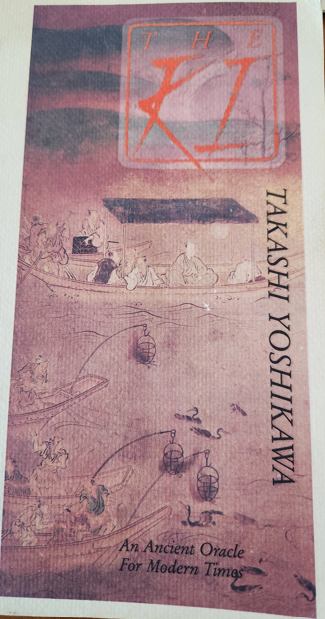
Author Takashi Yoshikawa (1924-2006) published a book called “The Ki” in 1986 and it has had a newer edition in print since then. “Ki” is pronounced like the English word “key.” I don’t recall when I first read his book, but it was when I was fairly new to Feng Shui and I was fascinated with the connection, as well as the distinctions, between Feng Shui and Nine Star Ki. This review comes at a time when I have decided to re-read some of my favorite books in my library.
The Ki, specifically, was a joy to re-read because decades later I am now a Nine Star Ki practitioner and I can understand and appreciate all that he wrote so much better now. As an aside, it is just such a pleasure to read books on Chinese metaphysics that were published before the wave of New Age authors, starting in the 1990’s, often written prematurely by people with too little information and too little experience.
Yoshikawa apparently had a pretty thriving “ki” consulting business when he moved to New York in the 1960’s, after having grown up in Japan and serving in the military. He had clients in the corporate world and entertainment business (of course), including John and Yoko Lennon.
Throughout Yoshikawa’s book, he never refers to the “ki” as Nine Star Ki, but his seminal work covers some of the major categories within the whole scope of Nine Star Ki. His book includes the formulas used to understand the person better: their aptitude, personality, strengths, weaknesses, and relationships with others. He shows the correlation with people having an experience of good luck or bad luck, in sync with the timing of when these events occur.
What he does not cover in this book is the practice of Nine Ki Divination or Luo Shu forecasting, which I learned solely from Heluo Hill. These are separate branches of the same system, including making predictions about global events and trends, as opposed to just tracking the luck of the individual. For any serious student of Nine Star Ki, his book is essential reading.
The sections of The Ki include the foundational principles of what it is as an esoteric system, where it comes from with references to the Chinese origins, even though Nine Star Ki continued to develop in more recent centuries by Japanese masters. He shows the reader how to determine their own Nine Star Ki “numbers” based on Year and Month of birth.
He shows examples of how some people naturally get along and connect, and why others don’t. There are indications that Five Element Theory plays a role, but not in the most obvious or conventional ways. Like other Nine Star Ki practices, “wu xing” is not used like it is in a fundamental way with Feng Shui.
In Chapter 5 (which is more than 200 pages), he lists all 108 personality types based on birth data. This section is impossible to commit to memory unless a person works closely with the stars and understands the subtext. Some of the famous people he uses as examples are celebrities from the 20th century and their names may not be recognized by younger people of today.
There are also some really unexpected associations when trying to understand personality types. For example, comedian Charlie Chaplin and Adolph Hitler are both “3.3.5” people. This is like saying they have a similar natal astrology chart. One has to really explore the stars on a deeper level to have that even make sense. Funny coincidence however, is that one of Charlie Chaplin’s most famous movies was “The Dictator,” where he mocked Hitler.
The latter part of the book covers the good and bad luck one can experience in regards to literal directions for traveling. Nine Star Ki travel observations have a lot in common with the principles we use in Feng Shui regarding yearly “Construction sha.” Stay tuned for another article about these noteworthy travel directions.
Author: Kartar Diamond
Company: Feng Shui Solutions ®
From the Nine Star Ki Blog Series
